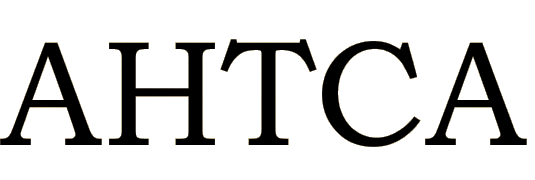Well balanced, small, yet strong, agile terrier that is a little longer than tall. Chest is deeper than wide, legs are well muscled and half the terrier’s height. The head has a moderately broad, flat skull with button drop ears. Skin is thick with a dense coat. The coat can be rough, smooth or broken. Tail is normally docked and held high.
Bold and notoriously fearless, loyal, friendly, active and alert. His swift and intelligent movements match his intelligent expression.
This is a high energy breed, happiest in an environment where there is lots of regular activity.
Head/Skull:
The head is proportionate to the size of the body. The skull is flat and moderately broad tapering towards the muzzle. The skull and muzzle are parallel.
Muzzle and Teeth:
Strong and powerful. There is a minimum of falling away under the eye giving a moderate chiseled scissors bite. The lips are tight and fully pigmented black/brown.
Eyes:
Deep-set, dark, and almond shaped. Eyelids are tight and fully pigmented black/brown.
Ears:
V-Shaped button drop ears of great mobility. Ear leather is soft and fine. Ears may be erect but not desired.
Neck:
The neck is strong and muscular allowing the head to be carried with poise. Gradually widens from the nape and blends smoothly into the shoulders. Length is sufficient enough to enable the terrier’s mouth to extend beyond the forepaws when working underground.
Body:
A properly proportioned Hunt Terrier is slightly longer than tall. The length of back from withers to set-on of tail is slightly longer than the height, measured from withers to ground. The Hunt Terrier is perfectly designed to go to ground. This requires a chest of sufficient depth to give good heart and lung room, but without so much depth and width that the dog is encumbered underground. The well-sprung ribs extend well back, but must be capable of being spanned behind the shoulder by an average man’s hand. The chest must be capable of being compressed so that the dog is unhindered when working underground. The back is of moderate length, and level, blending into a muscular, slightly arched loin with slight to moderate tuck up. Skin is thick.
Forequarters:
Shoulders are long, sloping, smoothly muscled, and well laid back. The upper arm is sufficiently long to ensure that the elbows are set well under the body, and forms an apparent 90-degree angle with the shoulder blade. The forelegs are strong, straight, and moderately well boned. The elbows are set close to the body, but able to move freely in action. The pasterns are short, powerful, straight, and flexible. When viewed in profile, the pasterns are nearly erect.
Feet:
The feet are fairly rounded, moderately small, well arched, and tight. Pads are hard, tough, and well cushioned. Dewclaws may be removed.
Height/Weight:
The mature terrier range in height from 8 to 12 inches, measured at the withers with the dog standing fully erect, 10 to 12 inches being “ideal”. The mature terrier would weigh approximately 1 to 3 pounds more than its height.
Hindquarters:
The hindquarters are strong and muscular. The bone, angulations, and musculature of the hindquarters are in balance with the forequarters. The stifles are well bent, and the hocks are well let down. When the dog is standing, the short, strong rear pasterns are perpendicular to the ground, and viewed from the rear, parallel to one another.
Tail:
The tail is set on high and customarily docked to a length so that the tip of the tail is level with the top of the ears. When moving or alert, the tail may be straight or with a slight curve forward and carried erect or gaily. When the dog is at rest, the tail may drop.
Gait:
The Hunt Terrier moves with a jaunty, confident attitude, conveying the character of the breed. When trotting, the gait is effortless, smooth, powerful, and well coordinated, showing good, but not exaggerated, reach in front and drive behind. The back line remains level with only a slight flexing to indicate suppleness. Viewed from any position, legs turn neither in nor out, nor do feet cross or interfere with each other. As speed increases, feet tend to converge toward centerline of balance.
Coat:
The Hunt Terrier comes in three coat types, rough, broken, and smooth. All are dense, hard, and weather resistant covering the entire dog, including the belly and underside of the thighs.
ROUGH: A double coat consisting of a short, dense undercoat and very dense, wirey outer coat. Hair over the eyes and on the muzzle will form eyebrows and a beard. The outer coat should not be so long as to obscure the outline of the dog.
BROKEN: The broken coat lies closer to the body than a rough coat and has longer guard hairs than a smooth coat. A broken-coated dog may or may not have face furnishings. Rough- and broken-coated dogs may be stripped to preserve the quality of the coat.
SMOOTH: A short, flat dense coat.
Color:
Solid red, solid tan (from a chocolate brown to a light lemon tan), true chocolate, solid black, or black with tan or red points, lilacs, and blues are acceptable colors for a Hunt Terrier. Solid white, predominantly white or spotted is not allowed. Legs and belly must not be white. A small amount of white (10% or less) is acceptable including the chest and feet.
Faults:
Any departure from the Hunt Terrier Breed Standard should be considered a fault.
The following faults should be penalized:
– Lack of true characteristics of a terrier: nervousness, cowardice, overly-aggressive
– Lack of balance, any over-exaggeration of any point
– Sluggish or unsound movements
– Faulty mouth, weak bite, minor physical deformities
Disqualifications:
Extreme viciousness, shyness or major physical deformities.
The following faults are considered to be so serious that terriers having them are not to be used for breeding:
– Undershot or overbites
– Luxating patellas
– More than 10% white.
